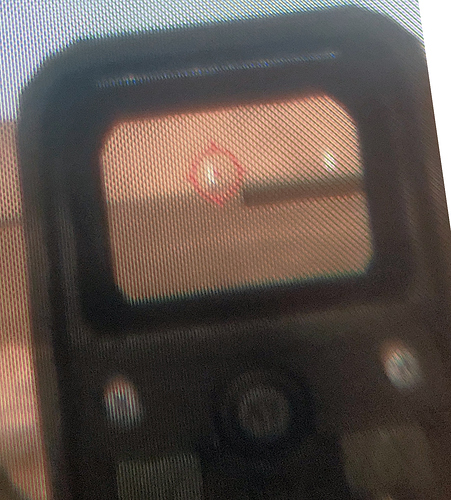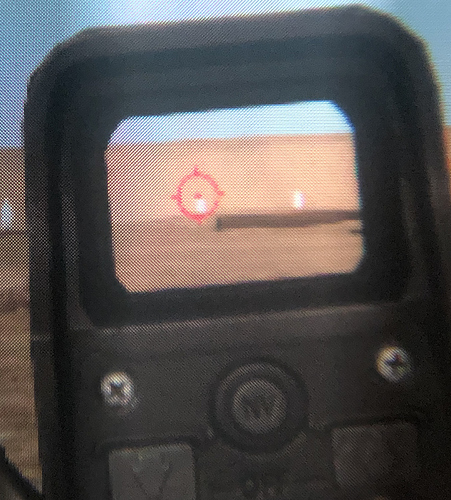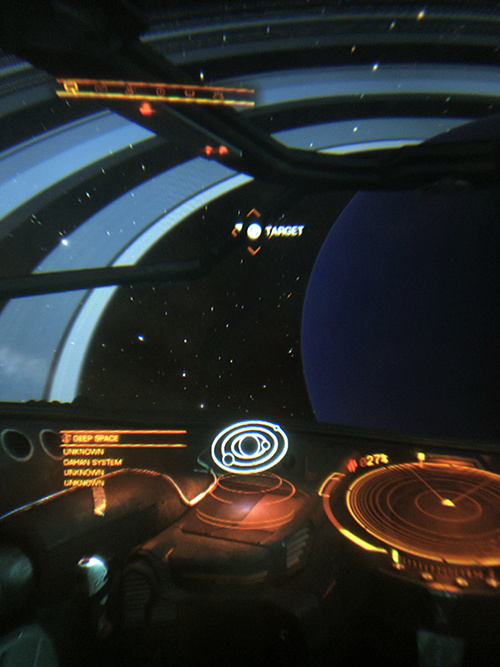1. Introduction
This review is long, but if you want to skim through quickly, you can just read the titles and the bold text. I made it so if you just read the bold text, you will get the gist of all that I am saying.
I also added (+) and (-) at the end of each heading to show whether that is a positive or negative topic for the 8K.
There are some DCS through the lenses vids towards the end.
TLDR
- (+) Awesome FOV, SDE and overall Image Quality that no other HMD provides together
- (-) Fiddly experience. You have to spend a lot of time adjusting stuff to get the best experience. (But it does provides a lot of customization options.)
My VR HMD Experience
I’ve owned the original HTC Vive since 2016 and have been using it up til I got my Pimax 8K.
I have also tested @bubbleball’s first 5K+ which was the original model that had black dots. I talked about my experience with that 5K+ at length in this thread.
My PC Specs
- Core i7 6700K OC @ 4400 Mhz
- GALAX RTX 2080ti SG Edition 11GB GDDR6 @ 1750 Mhz
- 32MB DDR4 ****PC3000 RAM OC @ 3200 Mhz
- Previously had MSI Gaming X GTX 1080
2. Image Quality and FOV
I talk about Image Quality and FOV first as they are the main reasons one would want to buy a Pimax 8K.
Initial Impressions (+)
When I first put on the 8K, the first feeling was, wow … the screens have so much horizontal width!! It was like putting a ultra-wide screen up to my eyes, when before I was used to a 4:3 ratio screen.
The colors and contrast immediately felt fine and the SDE was very small.
And then I felt the distortions which bugged me for a while until I swapped face cushions. Details of each below.
Distortion (-)
Initially, the distortions I saw was all around the edges, both far left/right and far top/bottom. The first day I played a few games with this distortion and found that it really bugged me. The experience didn’t seem realistic because of all of the distortions. I felt pretty bad about it, until I remembered that I had a thick (18mm) VR Cover that I can swap in.
Fixing Distortion (+/-)
Once I replaced in the 18mm VR Cover instead of the default face cushion, then the distortions greatly improved! The top/bottom distortion which was bugging me the most completely vanished. And the far left/right distortions reduced a lot.
After tuning the IPD a bit more (my IPD that I use is about 64.5mm) and maybe from PiTool improvements, now the distortions don’t bother me at all and I hardly notice them, even in Large FOV!
Hopefully in the future Pimax will bundle more than one face cushion so people can switch and try which one works best for them without having to find/buy from somewhere else.
Field of View (FOV) (+)
Pimax’s greatest advantage over any other consumer HMD on the market is the wide FOV. You can’t get this wide FOV experience in any other HMD.
And is it good? Yes it is!
I wouldn’t want to go back to a narrow FOV HMD now.
The wide view gives a new feeling of immersion that you can’t feel in older narrow FOV HMDs. The sense that you are there in the world is increased because there is one less thing (very narrow FOV) that is bugging you - one less thing telling you that this isn’t real.
It still doesn’t cover your whole FOV though, but it is close and is a huge increase over previous HMDs. The vertical FOV is also increased over the Vive which also adds a lot to the immersion.
In Onward following my team members down a tunnel in Subway I suddenly felt a sense of being there that I never felt before.
In theBlu, the Reef Migration scene felt so much improved from Vive … so much more real … and in the Whale experience you feel the expanse of the ocean and the enormous size of the whale even more because you aren’t looking through tissue paper rolls anymore.
FOV Options (+)
You can choose from 3 different FOVs.
- Normal FOV: This is the default value and is probably the most recommended for most users and games. It is a great balance between the wideness of the view and the performance requirements. It is already a MASSIVE increase compared to Vive level FOV.
- Large FOV: This is the widest FOV. Actually compared to Normal the difference is pretty small, but it still makes a difference**.** For games that your GPU can handle, this is a great option for increased immersion. However, sometimes there may be an impact to clarity, especially if parallel projections is needed.
- Small FOV: This is a bit narrower than Normal. However it is STILL MASSIVE compared to Vive level FOV. Great if you have a lesser GPU and/or want to supersample more.
I myself usually use Normal FOV.
SDE (+)
When I tried the Pimax 5K+ (original version with blackdots), I was a bit disappointed with the SDE. I felt that while the SDE was smaller, it was still easy to see and it seemed to cause the feeling that there were irregularities in the image instead of a smooth clean image. Maybe the newer 5K+ has improved in this regard. (I should get to try the newer 5K+ next week. Will update this review then.)
With the Pimax 8K, I feel that the SDE is even smaller, and more importantly it is almost invisible in normal gameplay, providing a clean smooth image throughout!
The SDE is so good that when looking at objects in games, such as the tablet in Onward or the fish swimming nearby in theBlu, I get the feeling that these are real solid objects more than I ever did in the Vive. This is because in the Vive, the SDE results in noticeable holes inside everything which destroys the illusion that things are solid. While in the 8K the SDE is so hard to see that you get the feeling that objects are real and really right there in front of you.
Here are some comparison images to show the improved SDE and resolution. These are through the lenses screenshots captured by opening 4K jpg images in Big Screen (connected with a 4K monitor).
In the first comparison, you can see how much worse the SDE in the VIVE is. It is so much larger and it makes seeing any fine details impossible.
Actual source image:

HTC Vive:

Pimax 8K:

In this second comparison, you can see how the Vive’s colors are better, but the Pimax 8K’s SDE allows to see a lot more details in the ‘petals’
Actual Source Image:

Vive:

Pimax 8K:

In both these examples though, you can see that we are still very far from the actual image resolution that we would hope to be seeing!
Horizontal Lines (Scanlines) Issue (-)
Some 8K owners have reported seeing these “Horizontal Lines” when moving their head. Below is how it looks like:

When your head is still, they don’t show up, but if you move your head up and down or side to side, they will become visible, especially on solid bright surfaces such as solid bright blue ocean in theBlu.
When they come up, they destroy the feeling of a clean smooth image and immediately makes you feel the reality that you are looking at a screen.
In truth, when I tried the Pimax 5K+, I saw similar artifacts, arguably worse which I’m not sure was caused by the SDE pattern or something else.
However, the good news is this issue can be fixed, or at least greatly improved.
Fixing the Horizontal Lines Issue (+/-)
If you get an 8K and you see the Horizontal Lines, then you just need to contact @Doman.Chen on this forum. He will send you a tool with instructions of what to do.
In summary, you will be able to adjust something called the “flick” setting. You can adjust “both” or only “left” or “right” if you want.
Initially my HMD’s flick values were L-9 R-9 (meaning left 9, right 9). This resulted in very noticeable horizontal lines.
Through trial and error and many rounds of adjusting, I found that L-5 R-9 is the best setting yet. This may or may not be the best value for other 8Ks, but what is definite is that there are some settings better than others.
The best way to find the best value is to find a game or experience in which the horizontal lines show up very easily and then use the tool to adjust the settings and immediately see if they improved or not. An improved value will make the horizontal lines fainter. You can try closing one eye at time to find the optimal value for each eye. Try opening both eyes too as the final lines are a merge of the lines from both eyes.
For me using theBlu, originally just looking at the blue ocean in the distance and moving my head up and down and left and right, the lines would show up clearly over the blue ocean. With improved settings, the horizontal lines would become harder and harder to see. At L-5 R-9, I can no longer see the horizontal lines at lower and middle parts of the ocean, only in the upper very bright parts where the sun is shining, and even then it is hard to see (you have to move your head in a certain way.)
However, even at L-5 R-9, in pure solid white, the horizontal lines are still there, but they a lot easier to ignore. While in everything else, they are so faint that they blend into the minimal SDE.
In summary after adjusting the “flick” value to L-5 R-9 I have achieved a solid clean image with minimal SDE and no irregularities in most situations with the 8K.
Colors, Contrast, Brightness, and Black Levels (+/-)
When I tried the 5K+, the biggest disappointments for me actually were the colors, contrast, brightness and black levels. In the 5K+ all the colors felt so much duller than the Vive and it felt like there was a cloudy haze in all dark scenes. (I was very critical of it in my 5K+ mini-review.) Again newer 5K+ units may have improved in this regard.
Before putting on the 8K, I put on the Vive one last time so I could immediately compare the colors. To my surprise, with the 8K, I didn’t feel that the colors were dull at all, even though it is an LCD compared to Vive’s OLED. Admittedly, my expectations were lowered after the 5K+ experience, but it still was a nice surprise.
In general use, the colors and black levels are great. In most scenes the blacks are black enough. The brightness when set at High is good.
And to top it off, Pimax’s new PiTool version allows adjustment of brightness and contrast, which can improve the image even more!
The best settings will depend on the type of experience or game. But in general, I find a setting of
- Contrast +1
- Brightness -2
To be the best, as more extreme values will crush the details in the brightest and/or darkest parts of scenes. However bring Brightness down to -3 or -4 is great when you are playing darker games and want to get that real dark feeling.
The 5K+ I think should benefit from the brightness and contrast adjustments even more than the 8K.
While the Black Levels on the 8K are fine in most cases, they aren’t as good as OLED which is apparent when you go into really dark experiences or watch movies. Also the brightness could be better in bright scenes.
God Rays and Lens Glare (+/-)
In HTC Vive and Rift CV1 we had “God Rays” in high contrast scenes such as bright white on pure black.
In Pimax 8K there aren’t really God Rays, but instead they appear as a bit of glare … small halos of brightness that seem like they are in the lens.
They are a bit distracting, but they only appear in more extreme situations and compared to Vive’s God Rays, this is a LOT better.
Image Quality Conclusion (+)
Without doubt, for me the 8K provides the best VR experience in terms of image quality and FOV in any HMD one can buy today.
The only HMD that might rival it is Pimax’s own 5K+ with its superior clarity, while HP’s Reverb might provide a new wow experience due to its high resolution (but with reduced FOV it is still a trade-off). [Details of Valve’s Index are still unknown at the time of writing.]
In any case,
The 5K+ and 8K has brought forward a new leap in VR image quality and immersion from wide FOV that as a backer, I am proud to have helped make happen!
3. Physical Properties
Headstrap and Comfort (+/-)
I am not really fussy when it comes to comfort. I have always used the original strap for my OG Vive and didn’t feel like I had to (or wanted to) pay for a Deluxe Audio Strap. The default strap was already comfortable enough for me. The only thing though that makes me want one (but not enough to pay for it) is the integrated audio so I don’t have to fiddle with the earphones so much.
For the Pimax 8K headstraps, I found the comfort to be similar to the OG Vive one. Together with my thick VR Cover face cushion, the Pimax feels comfortable and is fit snugly on my face.
I do hope that Pimax finish the development of their own deluxe audio strap soon though as the convenience of integrated audio is something I do want.
Face Cushion and Eye to Lense Distance (-)
The Pimax HMDs are known for being headsets where you have to get the IPD and HMD positioning absolutely right in order to get the best experience in terms of distortion.
The most important part of this, I feel is getting a face cushion that optimally places your eyes so they are the right distance from the lenses. This may vary from person to person, so I would recommend that Pimax include more than one face cushion in the box.
The importance of getting the right distance from your eyes to lenses can’t be stressed enough.
The experience you receive could change from I CAN’T USE THIS HMD AT ALL DUE TO DISTORTIONS to WOW THIS IS THE BEST HMD EVER!
So, if you find the distortions to be bad, and especially if you see distortions at the top and bottom of the view too, I would recommend buying some thicker face cushions.
Unfortunately, VR Cover doesn’t sell the 18mm face cushions that I am using anymore, but they do have 16mm Vive Pro and 14mm Vive face cushions that I think should still work.
IPD Adjustment and Eye Strain (-)
It is said that correct IPD adjustment for the Pimax HMDs will also reduce the amount of distortions you see. For me, I’m not sure about that, but one thing that I found is adjusting IPD definitely improves eye strain.
The Pimax HMDs have a physical IPD adjustment that goes from 60mm to 72mm. The good news is if you have even smaller IPD, which is not uncommon, you can also use PiTool to adjust the IPD further in the software. This should help cover almost everyone.
And even if your IPD is covered by the physical IPD adjustment, setting the software adjustment too seems to help with eye strain. For example, I found that by setting software IPD offset to -1 and then adjusting the physical IPD adjustment back to my normal IPD I have a setting that gives me a lot less eye strain.
So as with everything else with the Pimax, you have to keep adjusting until you find the best value.
Materials and Design (+/-)
I really like the design. The material used looks high quality. However there are reports of cracks developing, so currently I am still being careful when handling it.
4. Setup, PiTool, Tweaking and Performance
Setup Experience (+/-)
Setting up the Pimax, I used this list of instructions from Reddit.
Everything went well, except it detected only one of my two base stations at first. After a few reboots the second one appeared. Maybe it was because I had the base stations set to the mode that used the sync cables for syncing. I switched them to the normal line-of-sight syncing mode and after a reboot it worked.
Then in SteamVR Home, sometimes it would go crazy blinking and stuttering. I didn’t know what was wrong and thought it was a PiTool issue at first. But actually it was because at that point I still had only a GTX 1080 and my supersampling settings were set way too high because they were set for use with the Vive. They were set at something like 160% for the Vive, but now with the Pimax 8K 160% becomes some crazy high resolution which the GTX 1080 and SteamVR Home couldn’t handle. So fixing the supersampling settings fixed that.
After that everything went well and I’ve had no issues with headset tracking.
GTX 1080 vs RTX 2080ti Experience (+/-)
When I first got the 8K, I had only a GTX 1080. Things mostly worked fine. I used 72hz refresh rate with it which helped with performance a lot.
However, often times the controllers would feel sluggish when moving them. Likely my framerate was dropping and maybe the Smart Smoothing was kicking in.
I didn’t really measure the FPS I was getting, but I knew performance was suffering. So I went ahead and bought a GALAX RTX 2080ti.
With the 2080ti the experience was a whole lot better. Everything felt so much smoother and I could now increase Pitool quality setting to 1.25 and SteamVR SS to 60% as the baseline settings.
Once I got the 2080ti I became completely satisfied with my Pimax 8K. The wide FOV, the small SDE, and now the smooth performance made the experience wonderful.
So, I would highly recommend pairing your Pimax with the best GPU possible. It really does make a difference and will bring out the best experience from your Pimax.
Smart Smoothing and Refresh Rate (+)
To me, I can not really detect the difference between 72hz and 80hz. However I currently have the setting at 80hz since my 2080ti seems to be able to handle it.
In demanding flight sims such as DCS, Smart Smoothing will kick in and I think it works very nicely. In flight sims it is good as usually you are using a HOTAS and not your controllers.
However, for games where you use your Vive controllers, I wouldn’t recommend using Smart Smoothing if you can avoid it as your controllers may ghost, seem to stutter, or seem sluggish.
A stable 72hz is better than using 80hz with Smart Smoothing.
Another thing that has to be mentioned is that the Pimax headsets in general give a lot better experience when framerates are low compared to Vive. In Vive if framerates are low it can very quickly lead to motion sickness, but with Pimax even with lower framerates the experience is still very smooth.
Fixed Foveated Rendering
I have tested Fixed Foveated Rendering with DCS. It seems to increase FPS from AVG 33 to AVG 35 for me (with 1.25 Pitool, SteamVR 60% SS). Performance increase from Agressive was maybe just one fps better than Conservative, but Aggressive really destroys the image quality.
Conservative is probably the best selection if you want to use it as it is the least noticeable. There is still a noticeable circle edge around your periphery that you can see where the quality drops, but in normal gameplay you will not be looking at that area, so it is OK if you need extra performance.
Tip: Restarting SteamVR Easily
When using the Pimax, you will be doing A LOT of restarting SteamVR so that settings such as FOV are actually applied.
In the beginning I would have to take off the Pimax a bit every time in order to look at the monitor to click on the Start SteamVR button in PiTool.
However, an easy way to restart SteamVR without taking off the HMD is to
- use the SteamVR Desktop overlay
- open SteamVR Settings from the SteamVR Status window
- choose Developer page
- scroll down and click Restart SteamVR
Credit to @mmorselli where I first saw this method mentioned.
5. Games and Experiences
theBlu
I have found theBlu to be a great way to compare HMDs as it is a fixed experience so it is easy to compare.
In the Pimax 8K I was wowed by how pretty it looks. The minimal SDE makes the fish look a lot more believable. The colors are really nice in the Pimax 8K.
In the whale experience with the wide FOV you can see more of the whale at the same time and the feeling that this gigantic whale is right before you is really enhanced.
The 3rd dark experience feels a lot less darker than in Vive. Here you see the limits of the black levels. However, it is still very nice.
Here is a (somewhat boring) through the lenses video of theBlu on Pimax 8K:
Onward
Of all VR games, I have the most hours in Onward. The multiplayer aspect and the realism of the game makes it one game that I can keep coming back to. Some great updates are coming up too.
In Onward, which is a military sim shooting game, the ability to identify targets that are far away and the ability to accurately line up shots on them is extremely important to survival.
The Pimax 8K has met my expectations here. Now I can see enemies a lot further away!
Also the wide FOV helps a lot in close quarter situations and checking and covering angles. It can help me see enemies at the edge of my vision, letting me kill the enemy faster.
Together, the SDE, resolution and FOV help increase the realism and sense of presence a lot!
I also have a ProtubeVR which I highly recommend as it is responsible for maybe 30% the realism felt and it helps a ton with quickly lining up shots.
You can play Onward with Parallel Projections on or off. With it off there will be a bit of clipping of objects on the far edges, but I prefer it because the game feels smoother and sharper with it off.
Here is how the SDE has improved the targetting.
Vive:
Pimax 8K:
Beat Saber
Beat Saber is another game that I play a lot. The ability to download songs that I like to play with it is really the killer feature. (Actually it is not a feature but it is thanks to the modders.)
On Pimax 8K the boxes look nice and solid and the added FOV helps with hitting the boxes. In Vive I would have to hit some boxes blindly, but with the Pimax I can see more of the boxes I am hitting.
With Parallel Projections Off there is a weird effect in the menus where the blue fog which should be in the distance is instead in your face. Otherwise you can play with it On or Off.
SkyrimVR
SkyrimVR works great with the Pimax. The wide FOV puts you into the world and the better resolution and SDE helps by not taking you out of it.
I haven’t really had time to play a lot of SkyrimVR on the Pimax 8K yet, but from what I’ve tried it is a great upgrade from the Vive experience.
I prefer Parallel Projections On as with it Off the grass gets smeary and there is object popping at the edges.
Elite Dangerous
I haven’t really ‘played’ ED in Pimax 8K yet, just went in to check the black levels and text clarity. With the 8K both are good.
Here is a through the lens screenshot:
Aerofly FS2
I really like Aerofly FS2. The performance is really good and it has a wide range of aircraft to try flying from an Airbus A320 to an F-15E Strike Eagle. Great for casually experiencing flying around.
As you might guess, I haven’t really had time to invest in getting serious with any flight sim yet (but I really want to), so flight model or aircraft simulation details aren’t yet apparent to me.
But as a casual player, on the Pimax 8K, with wide FOV and great SDE and resolution, flying in any flight sim feels pretty realistic. I also have an Saitek X52 Pro HOTAS (highly recommendeded) and it works great with all flight sims.
Just sitting in the cockpits feels awesome, and the dials and control labels are a lot easier to read.
BTW with PiTool 1.22 I had to choose the Vulkan renderer in Aerofly FS2 to get it to work.
DCS
Again, I haven’t had time to really invest into DCS yet, but it feels so amazing on the Pimax 8K that I guess I won’t be able to resist doing so. The overall feeling is even more realistic than Aerofly FS2!
The graphics are phenomenal on the 8K. The lighting is amazing and I really love the ground details in DCS. Makes flying close to the ground feel so much more realistic than Aerofly FS2’s flat textures except in some cities.
Parallel Projections Off seems to work fine, except some clouds in the distance shimmering.
If you like DCS, I would recommend getting a Pimax and a 2080ti. There is no better way to experience it right now!
Below are a few through the lens videos of the Su-25T cockpit:
Big Screen and Movies
Using Big Screen/Virtual Desktop for desktop usage and watching movies is a lot better on the 8K, but still not at the level that I would want to use my Pimax for them rather than just using a monitor or big TV screen.
Even though the SDE is becoming acceptable and the colors are fine, the resolution is just not there yet for me.
Also, when watching movies, the black levels and the blackness of the surrounding parts of the screen (which should be black) is a bit lacking.
And in high contrast scenes, a bit of lens glare will come up. So overall the experience of watching movies is a lot better than Vive, but not good enough for serious use yet.
3D VR 360/180 Movies
This type of content benefits greatly from the improved SDE and FOV. With high resolution 5K videos, the image becomes a lot more life-like than before.
Similar to in games, when compared to the Vive, nearby objects in 3D movies become much more realistic and look more solid and real due to the hard to see SDE. The wide FOV again helps with immersion.
If you like this type of content, then the Pimax 8K should be a great choice for you, and with Pimax’s wide FOV, you will definitely get an experience that you can’t have with other HMDs.
6. Conclusion
After waiting so long for my Pimax 8K, I am extremely happy with the final product that I received.
I would like to thank Pimax for pushing the limits of VR forward.
And finally, I would like to thank all the forum members and fellow Kickstarters and early adopters here who have helped make the wait bearable!!
Update: New 5K+ Impressions
Today we had a VR meetup in Bangkok and I had the chance to try @bubbleball’s newer 5K+ and it is a big improvement over his original one.
New 5K+ compared to older 5K+
- It has no black dots
- It has better brightness
- It has less ireggularities in the image
New 5K+ compared to my 8K
There isn’t a clear winner and it is also mostly down to taste as each has different strengths and weaknesses and different SDE patterns. Some preferred 8K and some preferred 5K+.
Beware that I am biased to the 8K, but I will try to give objective observations:
- 5K+ screen is brighter. This was pretty clear. So for games where you want bright colorful graphics, I think 5K+ may do better.
- However, it is the 5K+'s LCD backlight that is brighter, so on the other hand the 8K has a bit better contrast and deeper black levels, so for darker games 8K may be better.
- 5K+ has better clarity. Small details on 8K are bit more fuzzy.
- 8K SDE is less noticable when playing games. The 5K+ SDE manifests as a very grid-like pattern that is hard to not see. While for the 8K, the SDE blends in more with the background.
- Both 5K+ and 8K have horizontal lines. 8K horizontal lines are more visible in bright/white situations, while 5K+ horizontal lines are more visible in other color situations (I think green and blue, not sure.)
- 8K probably demands higher SS values.
Overall I prefer 8K mainly due to SDE, while @bubbleball prefers 5K+ due to clarity (and brightness I think).






